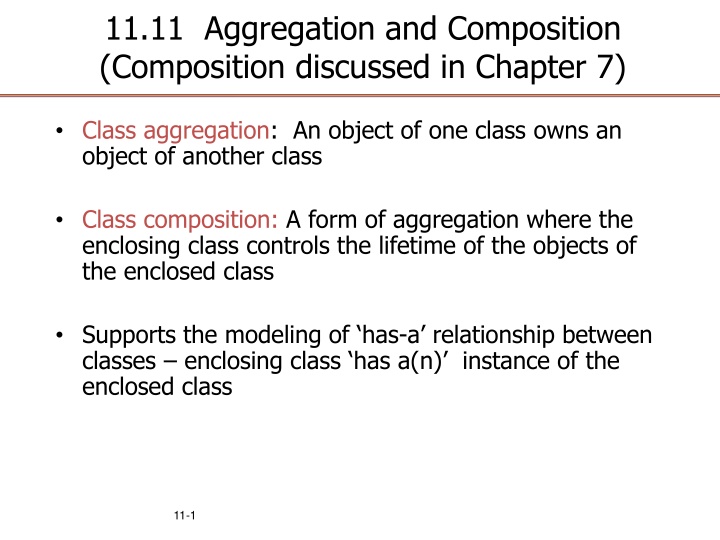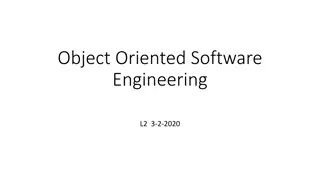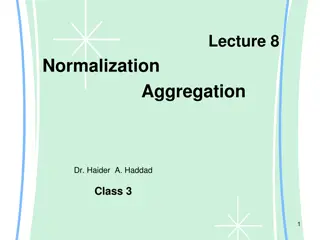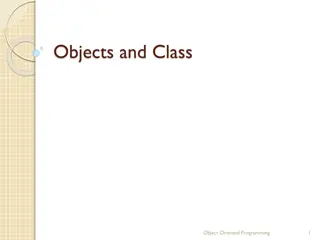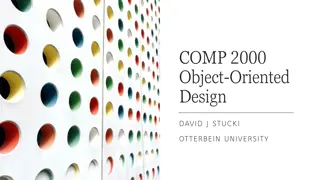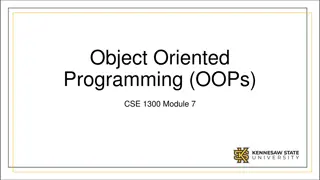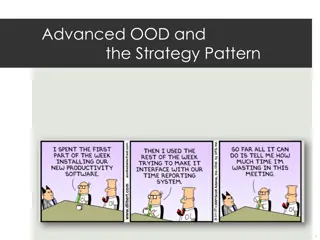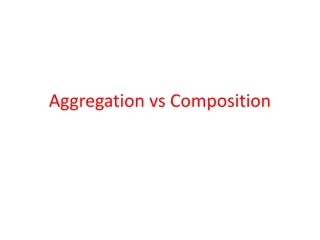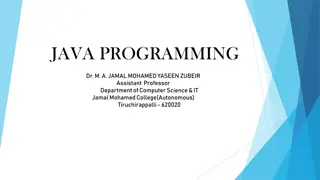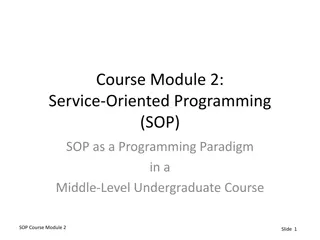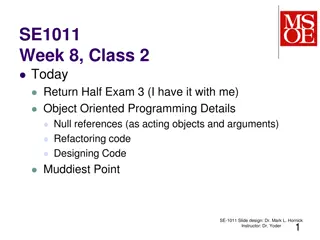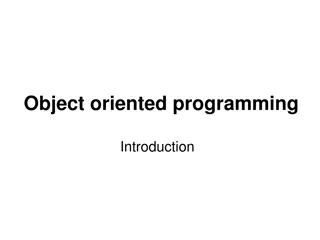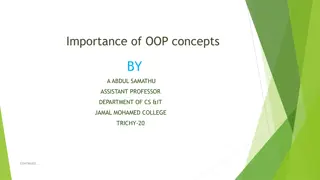Aggregation and Composition in Object-Oriented Programming
Aggregation and composition are essential concepts in object-oriented programming, defining relationships between classes and objects. Aggregation allows objects of one class to own objects of another class, while composition represents a stronger relationship where the enclosing class controls the lifetime of the enclosed class objects. Learn about the nuances and implications of these concepts through insightful examples and detailed explanations.
Download Presentation

Please find below an Image/Link to download the presentation.
The content on the website is provided AS IS for your information and personal use only. It may not be sold, licensed, or shared on other websites without obtaining consent from the author.If you encounter any issues during the download, it is possible that the publisher has removed the file from their server.
You are allowed to download the files provided on this website for personal or commercial use, subject to the condition that they are used lawfully. All files are the property of their respective owners.
The content on the website is provided AS IS for your information and personal use only. It may not be sold, licensed, or shared on other websites without obtaining consent from the author.
E N D
Presentation Transcript
11.11 Aggregation and Composition (Composition discussed in Chapter 7) Class aggregation: An object of one class owns an object of another class Class composition: A form of aggregation where the enclosing class controls the lifetime of the objects of the enclosed class Supports the modeling of has-a relationship between classes enclosing class has a(n) instance of the enclosed class 11-1
Aggregation and Composition In both aggregation and composition, the object of one class owns an object of another class. With aggregation, the dependent object is standalone and can exist even if the owning class is not existent. In composition, the object of the class that is owned by the object of it s owning class cannot live on it s own (also called death relationship ). It will only live as a part of its owning object. 11-3
Aggregation, Composition, and Object Lifetimes Composition is a form of aggregation in which the lifetime of the owned object is the same as that of the owner object Owned object is usually created as part of the owning object s constructor, destroyed as part of owning object s destructor 11-4
Aggregation Example Consider a generalized Car class and a Wheel class. Car needs a Wheel object to function, but Wheel can exist without a Car - it may be used in a Bike, Truck, Motorcycle, etc. 11-5
Composition Example Now consider a Car class and a engine class that is a specific type of engine, called SpecificEngine that is specific to that car, meaning that it cannot be used in any other car. For example, a Mazda RX8 (and RX7) has a rotary engine. Very few cars have a rotary engine. An object of Car class cannot exist without an object of SpecificEngine class, and an object of SpecificEngine has no significance without Car class. i.e., Car class solely owns the SpecificEngine class 11-6
Object Composition class StudentInfo { private: string firstName, lastName; ... }; class Student { private: StudentInfo personalData; ... publice: Student(string fname, string lname) { firstName = fname; lastName = lname; } }; 11-7
Member Initialization Lists Used in constructors for classes involved in aggregation. Allows constructor for enclosing class to pass arguments to the constructor of the enclosed class Notation: owner_class(parameters):owned_class(parameters); 11-8
Member Initialization Lists Use: class StudentInfo { string firstName, lastName; ... }; class Student { private: StudentInfo personalData; public: Student(string fname, string lname): StudentInfo(fname, lname); }; 11-9
Member Initialization Lists Member Initialization lists can be used to simplify the coding of constructors Should keep the entries in the initialization list in the same order as they are declared in the class 11-10
Object Composition class Date { private: string month; int day, year; public: Date(string m, int d, int y): // initialization list month(m), day(d), year(y) {} }; class Person { private: string name; Date dateOfBirth; public: Person(string name, string month, int day, int year): dateOfBirth(month, day, year) // init list { this->name = name; } }; 11-11
Object Composition class Date { private: string month; int day, year; public: Date(string m, int d, int y): month(m),day(d), year(y) {} }; class Person { private: string name; Date dateOfBirth; public: Person(string name, string month, int day, int year): name(name), dateOfBirth(month, day, year) {} }; 11-12
Aggregation Through Pointers A has-a relationship can be implemented by owning a pointer to an object Can be used when multiple objects of a class may have the same attribute for a member ex: students who may have the same city/state/ zipcode or country Using pointers minimizes data duplication and saves space 11-13
Aggregation Through Pointers class Date { private: string month; int day, year; // rest is the same as before }; class Country { private: string name; // possibly other fields }; class Person { private: string name; Date dateOfBirth; shared_ptr<Country> pCountry; public: Person(string name, string month, int day, int year, shared_ptr<Country>& pC): name(name), dateOfBirth(month, day, year), pCountry(pC) {} }; 11-14
